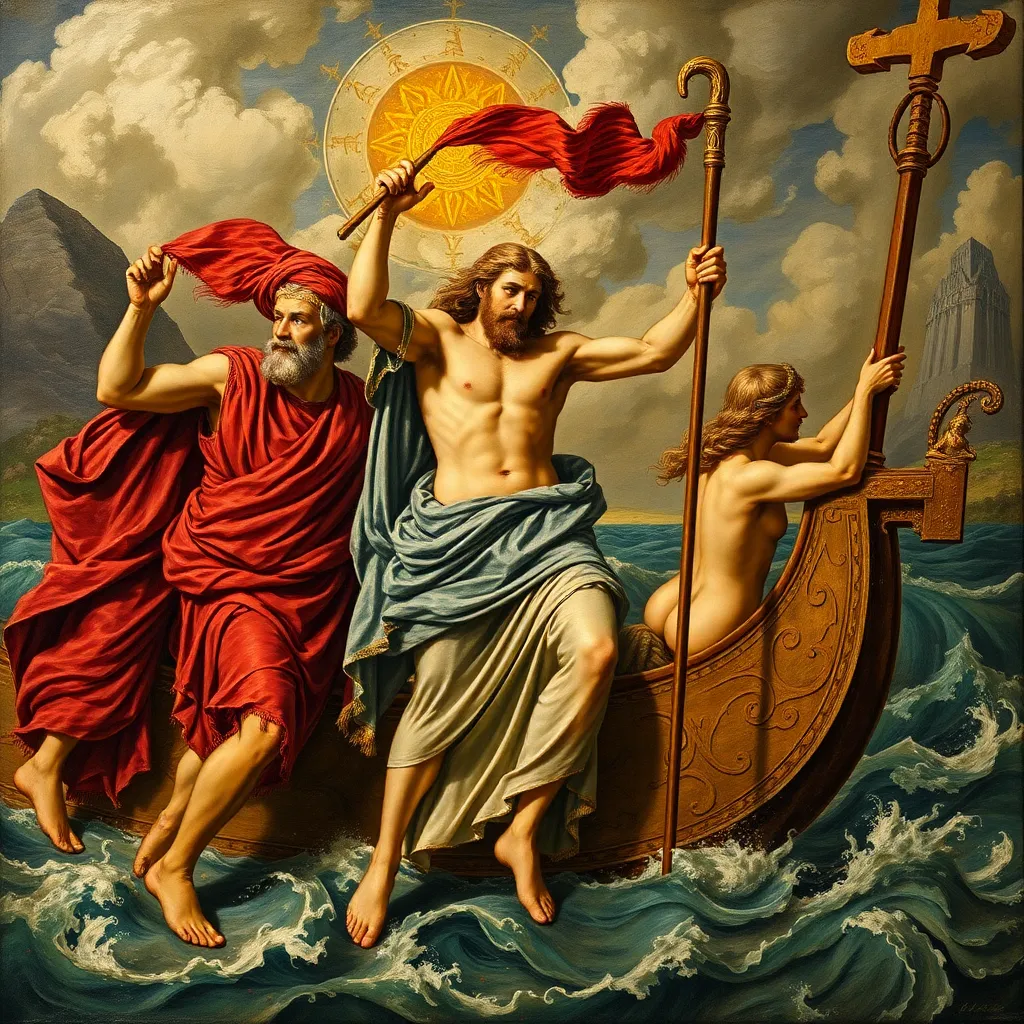The Influence of Jason and the Argonauts on Renaissance Art
I. Introduction
In the vast tapestry of Greek mythology, the story of Jason and the Argonauts stands out as a tale of adventure, heroism, and the quest for glory. Jason, the son of Aeson, embarks on a perilous journey aboard the ship Argo, accompanied by a band of heroes known as the Argonauts, to retrieve the coveted Golden Fleece from the distant land of Colchis. This myth not only captivated the imaginations of ancient Greeks but also held significant sway over Western culture throughout the ages.
The myth of Jason and the Argonauts serves as a cornerstone of classical literature and has inspired countless artistic endeavors. During the Renaissance—a period characterized by a revival of classical themes and a focus on humanism—the story found new life, influencing artists, writers, and thinkers in profound ways. This article explores the impact of Jason and the Argonauts on Renaissance art, examining how this ancient myth resonated with the ideals of a transformative era.
II. Historical Context of the Renaissance
The Renaissance, spanning from the 14th to the 17th centuries, marked a significant turning point in European history. It was a time of renewed interest in the classical antiquities of Greece and Rome, leading to the flourishing of art, literature, and science. Humanism emerged as a key intellectual movement, emphasizing the value of human experience and the study of classical texts.
During this period, artists and writers sought inspiration from ancient mythology, reviving themes and stories that had long been dormant. The portrayal of mythological subjects became a means of exploring human emotions, virtues, and the complexities of life. The influence of mythology in Renaissance art and literature cannot be overstated, as it provided a rich source of content for creative expression.
III. The Journey of the Argonauts: A Symbol of Adventure and Heroism
Jason’s quest for the Golden Fleece epitomizes the themes of adventure, heroism, and perseverance. The journey is fraught with challenges, including encounters with fierce creatures, treacherous waters, and the formidable sorceress Medea, who ultimately aids Jason in his quest. This narrative resonates deeply with the Renaissance ideals of exploration, courage, and the pursuit of knowledge.
Key themes that emerge from Jason’s story include:
- Heroism: Jason embodies the archetype of the hero, facing insurmountable odds with bravery.
- Adventure: The journey of the Argonauts symbolizes the spirit of exploration that characterized the Renaissance.
- Perseverance: Jason’s determination to achieve his goal reflects the humanistic belief in the power of individual will.
IV. Artistic Representations of Jason and the Argonauts
Many Renaissance artists were influenced by the myth of Jason and the Argonauts, incorporating its themes and characters into their works. Notable artists who drew inspiration from this myth include:
- Michelangelo: Known for his masterful sculptures and paintings, Michelangelo often explored themes of heroism and human struggle.
- Botticelli: His works frequently featured mythological subjects, capturing the beauty and complexity of the narratives.
Some notable artworks inspired by the Argonauts include:
- The Birth of Venus by Botticelli – While not directly depicting the Argonauts, it embodies the Renaissance fascination with classical mythology.
- Jason and Medea by various artists – Numerous interpretations exist, showcasing the dramatic moments of their relationship.
In analyzing specific pieces, one can see how artists interpreted the myth through their unique lenses, often focusing on the emotional depth of the characters and the grandeur of their adventures.
V. The Use of Classical Motifs in Renaissance Art
Renaissance artists frequently employed classical motifs, drawing parallels between the adventures of the Argonauts and other mythological tales. The integration of these motifs allowed for deeper allegorical and symbolic representations in art.
Comparing Argonaut motifs with other classical influences reveals:
- The shared themes of heroism and divine intervention seen in both Argonaut and Trojan War narratives.
- The depiction of gods and goddesses as integral to the human experience, emphasizing the interconnectedness of divine and mortal realms.
The impact of humanism on the portrayal of mythological subjects is evident, as artists began to focus on the human condition, emotions, and experiences, rather than merely illustrating the gods and their exploits.
VI. Literature and the Arts: Interdisciplinary Influences
The interplay between literature and visual arts during the Renaissance was significant, with literary works shaping artistic representations of myth. Apollonius of Rhodes’ epic poem, Argonautica, provided a detailed narrative of Jason’s adventures and served as a source for many artists.
Influence extended beyond literature, as poets and playwrights inspired visual artists in their interpretations of mythological themes. The cross-pollination between different artistic mediums allowed for a richer exploration of narratives, leading to a more nuanced understanding of characters and their journeys.
VII. Legacy of Jason and the Argonauts in Subsequent Art Movements
The myth of Jason and the Argonauts continued to influence art beyond the Renaissance, shaping later movements such as Baroque and Neoclassicism. Artists in these periods revisited the themes of adventure, heroism, and the complexities of human relationships found in the myth.
Later interpretations of the Argonauts resonated with contemporary audiences, as the story’s timeless themes of aspiration and struggle remained relevant. Modern artistic expressions continue to draw on the rich legacy of this myth, showcasing its enduring appeal.
VIII. Conclusion
In summary, the influence of Jason and the Argonauts on Renaissance art is a testament to the power of mythological narratives in shaping artistic expression. The themes of heroism, adventure, and perseverance found in Jason’s quest resonated deeply with Renaissance ideals, inspiring a multitude of artists across various mediums.
The lasting impact of mythological stories extends beyond the Renaissance, continuing to captivate and inspire artists throughout history. As we reflect on the relevance of classical mythology in contemporary culture, the story of Jason and the Argonauts serves as a reminder of the universal human experiences that connect us all.




